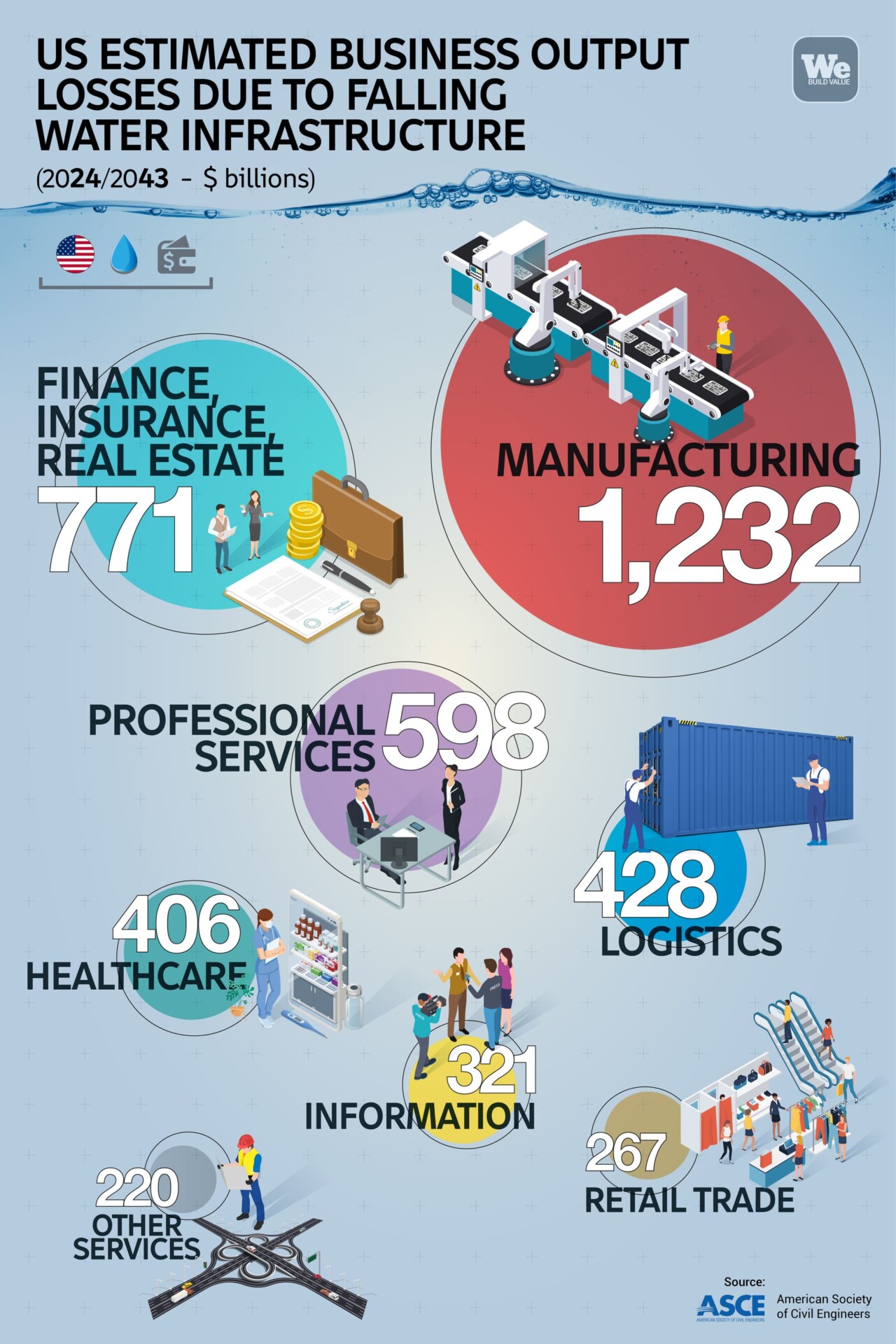America has no choice: it must continue to invest in water. By the end of this year, the projected gap between water infrastructure needs and federal spending will be $91 billion. This gap could exceed $2 trillion in 20 years. The data comes from the latest report by the American Society of Civil Engineers (ASCE), published at the end of May in conjunction with the private association US Water Alliance.
In the last three years, the study emphasizes, significant progress has been made thanks to the $55 billion investments distributed in water projects by the Infrastructure Investments and Jobs Act of 2021. However, it is necessary to maintain this investment pace. The report, titled “Bridging the Gap: the Power of Investment in Water,” estimates that with sufficient funds allocated to repair and replace much of the United States’ water and sewer systems, the gap would reach “only” $125 billion in twenty years (instead of $2 trillion).
A Failure Every Two Minutes
Most of the American water network was built over a century ago, so every two minutes, a water pipe breaks somewhere in the country. Drop by drop, this results in a total loss of 1.7 trillion liters of potable water each year.
Water services, including wastewater services, must also face a series of constraints unknown at the time most were designed and built. For example, it is estimated that there are six to ten million lead service lines in communities across the country. Health crises related to lead pipes, such as in Flint, Michigan, have increased public attention and demands to remove and replace lead service lines, a complex and expensive operation.
The dilemma has always been on the table, and the report underscores it with new numbers: lack of investment in water would translate into a cost of $287 billion to businesses over twenty years, whereas maintaining the levels of the 2021 law would reduce that cost by 46% to $134 billion. This highlights the American water emergency more clearly, as even by continuing to invest at the 2021 pace, the cost to businesses—and consequently to communities and individuals—would remain above $134 billion.
From Lake Mead to Washington, Major Projects to Solve the Water Crisis
Despite the lack of adequate federal funds, in the past ten years, some states have also leveraged local resources to finance significant projects, such as those undertaken by Webuild and its American subsidiary Lane Construction. Among these, Lake Mead Intake 3, designed to ensure a water supply level from the Colorado River and hydrate a vast inhabited area of Nevada around Las Vegas; or the Clean River Project in Washington D.C., which has reduced sewage overflows and captured and cleaned water during rains before it reaches the Potomac, Anacostia, and Rock Creek rivers. Equally crucial for citizens’ health and the environment is the Ship Canal Water Quality Project under construction, which involves a 2.7-mile (4.3-kilometer) tunnel to redirect and clean wastewater and rainwater into Seattle‘s network in Washington state.
Major Wastewater Treatment Projects
According to Environmental Protection Agency (EPA) data, 75% of Americans are served by about 16,000 municipal wastewater treatment systems. This network is not in the best condition, receiving a grade of D+ in the latest ASCE report cards. Thus, regardless of government and congressional plans, various projects are in the pipeline or already underway in individual states. For example, Texas has announced over $1 billion in upgrades to the Walnut Creek Wastewater Treatment Plant in eastern Austin. The plant, one of two main facilities managed by Austin Water, treats the city’s sewage system’s wastewater before redirecting it back into the Colorado River. The work to rehabilitate the plant, built 47 years ago, is expected to start in 2025.
Following Austin’s project, other projects valued at over $100 million are registered in Tennessee, with Nashville’s White Creek Wastewater Treatment Plant for $403 million, and in Florida with the expansion of the Southwest Water Reclamation in Manatee County for $193 million.


